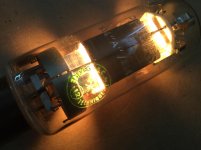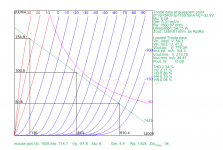Thé 814 made by Philips is a spécial high-tech quality made for power lasers.
Thé name is 814 «*A*» on thé tube to différentiate from ordinary 814.
And in audio thé triode sound is extraordinary.
Thé name is 814 «*A*» on thé tube to différentiate from ordinary 814.
And in audio thé triode sound is extraordinary.
Attachments
Last edited:
I agree that the sound is on par with the best 845 I got...and surpasses the 300B anyhow...quiet happy that I bought a lifetime stock of these...I might go to PSE for 25-30W with a 814 drives 814 setting...now I have to figure out if they die quickly (both behave the same) or at which settings they are solid...or will move on to the 813 (which I will try next weekend and compare with gm70)...
I suppose you know that :
814 SE A2 Amplifier – Bartola(R) Valves
I also have some 814a for two lifes with a project 814a drive 814a.
Need a schematic.......
The 814a was built at first by Philips to swap with thé US 814 who had gaz problems.
Because a lot of military radios used it.
Then it found a road in pulse systems and other laser things.
So we can hope that is a very rugged tube.
We can....
814 SE A2 Amplifier – Bartola(R) Valves
I also have some 814a for two lifes with a project 814a drive 814a.
Need a schematic.......
The 814a was built at first by Philips to swap with thé US 814 who had gaz problems.
Because a lot of military radios used it.
Then it found a road in pulse systems and other laser things.
So we can hope that is a very rugged tube.
We can....
I saw that some of my tubes have a grren, others a red stamp on them...do you have any idea what this means ? Measurementwise I could not measure a difference...and: Did you you came across a different data sheet for the Philips "A" version ?
Yes, i can see the quality issues with the GE 814, most if not all my 814 GE samples had half of what the data sheet proposed in terms of emission or half of the Philips...or got flashing lights when powering on. Never happened with any Philips.
I know Bartolas article, but chose to go not into A2. I like to keep it simple. IT coupled. A1. All DHT. Each stage designed for lowest distortion. currently 801A-->801A-->814. The amplifier has not a lot of parts. No coupling caps, no resistors, but a maxed out PSU with 872A, amorphous and nano six chamber chokes and 947D DC-Link Polypropcaps (similar to Aries cerat). Rgn 2004 for the driver psu. So, very few parts, but of highest quality.
The heating is all Rod coleman regs...which is bigger than anything in the actual amp...at some day I may compare a passive LCLCL supply vs. Rods, but currently I enjoy that I can heat anything I want within minutes.
Yes, i can see the quality issues with the GE 814, most if not all my 814 GE samples had half of what the data sheet proposed in terms of emission or half of the Philips...or got flashing lights when powering on. Never happened with any Philips.
I know Bartolas article, but chose to go not into A2. I like to keep it simple. IT coupled. A1. All DHT. Each stage designed for lowest distortion. currently 801A-->801A-->814. The amplifier has not a lot of parts. No coupling caps, no resistors, but a maxed out PSU with 872A, amorphous and nano six chamber chokes and 947D DC-Link Polypropcaps (similar to Aries cerat). Rgn 2004 for the driver psu. So, very few parts, but of highest quality.
The heating is all Rod coleman regs...which is bigger than anything in the actual amp...at some day I may compare a passive LCLCL supply vs. Rods, but currently I enjoy that I can heat anything I want within minutes.
Last edited:

